How To Install My PetSafe® SmartDoor™ Connected Pet Door in a Non-Metal Door
Table of Contents
Important Information
Before installing the SmartDoor™, make sure:
- You have completed the instructions in Planning My PetSafe® SmartDoor™ Connected Pet Door Installation.
- You have all the tools and materials listed in Tools and Materials Needed for My PetSafe® SmartDoor™ Connected Pet Door Installation.
- You have set up your pet door in the app and tested it in the location where you would like to install it. For detailed information, visit How To Connect My PetSafe® Smartdoor™ Connected Pet Door to the App.
- You have removed the batteries from the pet door prior to installation.
For installation, you will need:
- SmartDoor™ Connected Pet Door Tunnel Extension in the size that corresponds with your pet door if your metal door is thicker than 2 ¼ inches.
Measure and Mark
It is important to your pet’s well-being to measure and mark your pet’s shoulder height for proper installation placement. If there are multiple pets, use the tallest pet’s shoulder height.

Measure and mark your pet’s shoulder height on the door with a pencil using either method:
- Have your pet stand next to the door and mark their shoulder height.
- Use a measuring tape to measure your pet from the floor to their shoulder. Then apply that measurement to the door.
Use a level to extend the mark into a line.
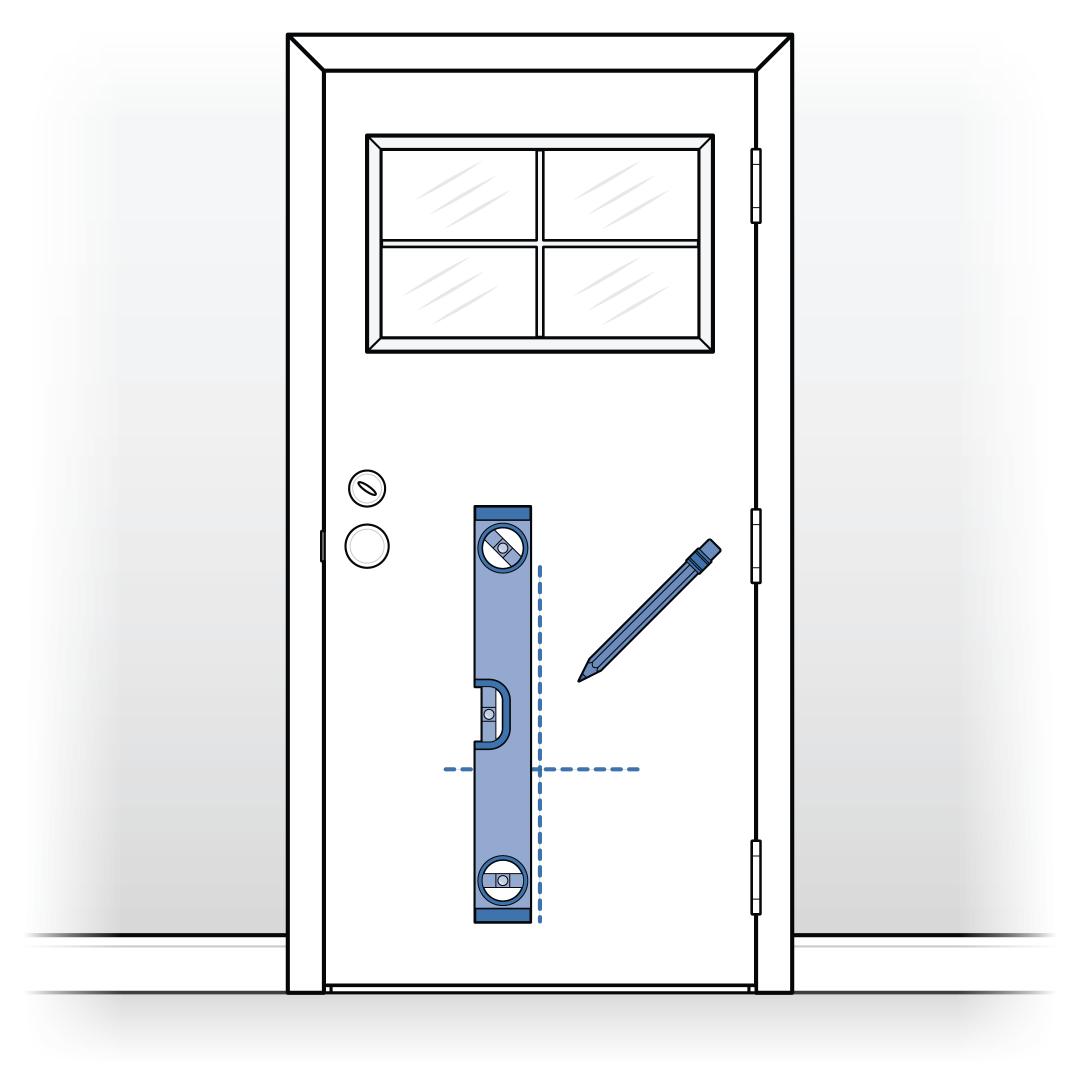
Decide where on your door to install the pet door.
- The pet door does not have to be installed in the center of your door. You may choose to adjust it to the left or right.
- If you are installing it in a paneled door, align it within a panel for ease of installation.
Use a level to draw a vertical line for the pet door to be centered on. If you are placing the pet door centered on your door, find the center of your door and draw a vertical line.
Prepare the Door
You may choose to keep the door in place or remove the door from its hinges to cut the opening. Select which method works best for you.
To remove the door:
Use a flat-head screwdriver and a hammer to remove the pins from the hinges.
Place the door, interior side up, on a raised level surface suitable for drilling and cutting, such as a pair of sawhorses. Clamp or weigh down the door to prevent it from moving.
Place the Template
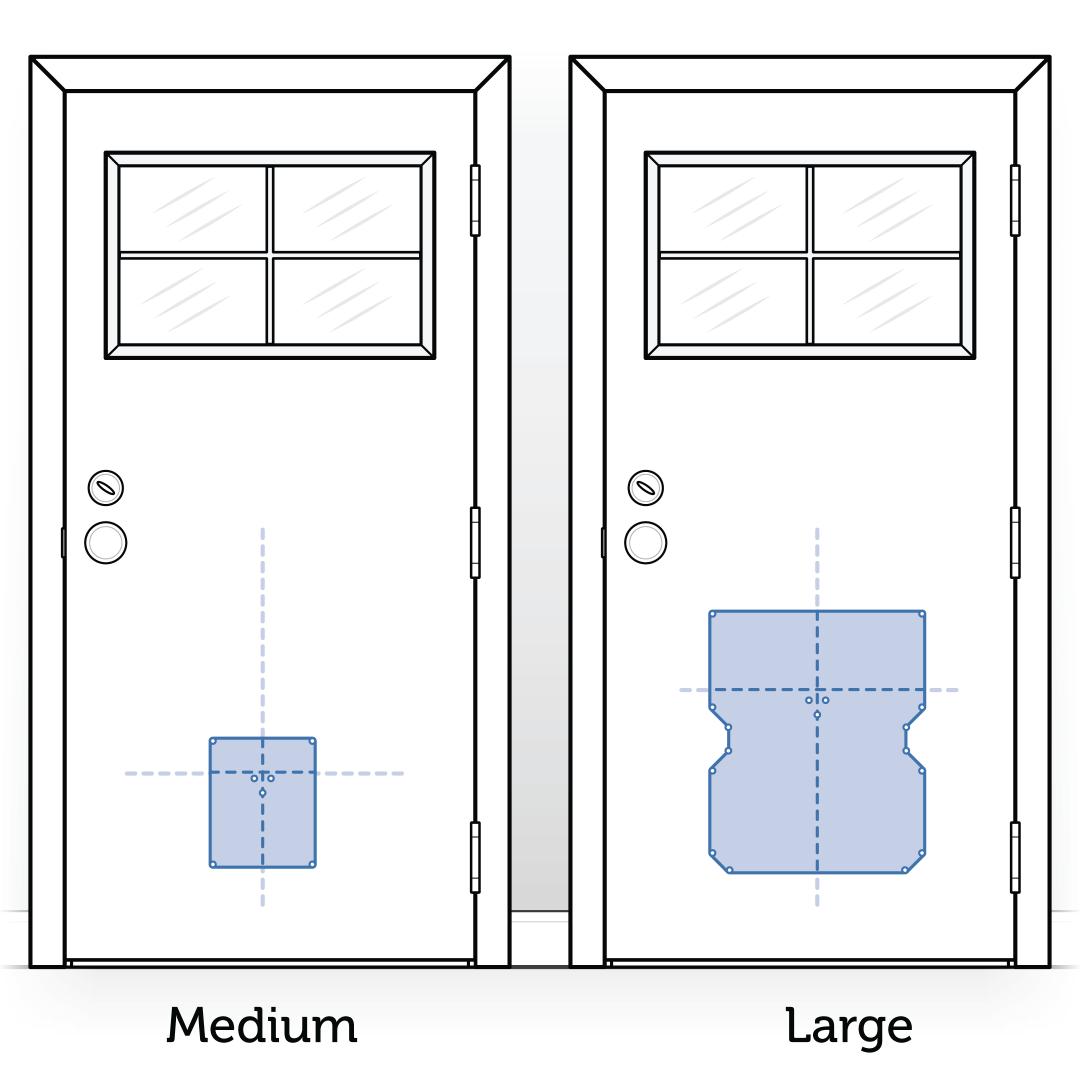
Cut out the cutting template for installation in non-metal doors and align the height and center lines you marked to the ones on the template.
Make sure the template is at least 3 inches from the bottom and sides of the door to keep the structural integrity of the door. If it is less than that, you will need to adjust your lines accordingly to ensure the 3-inch minimum. Tape the template in place.
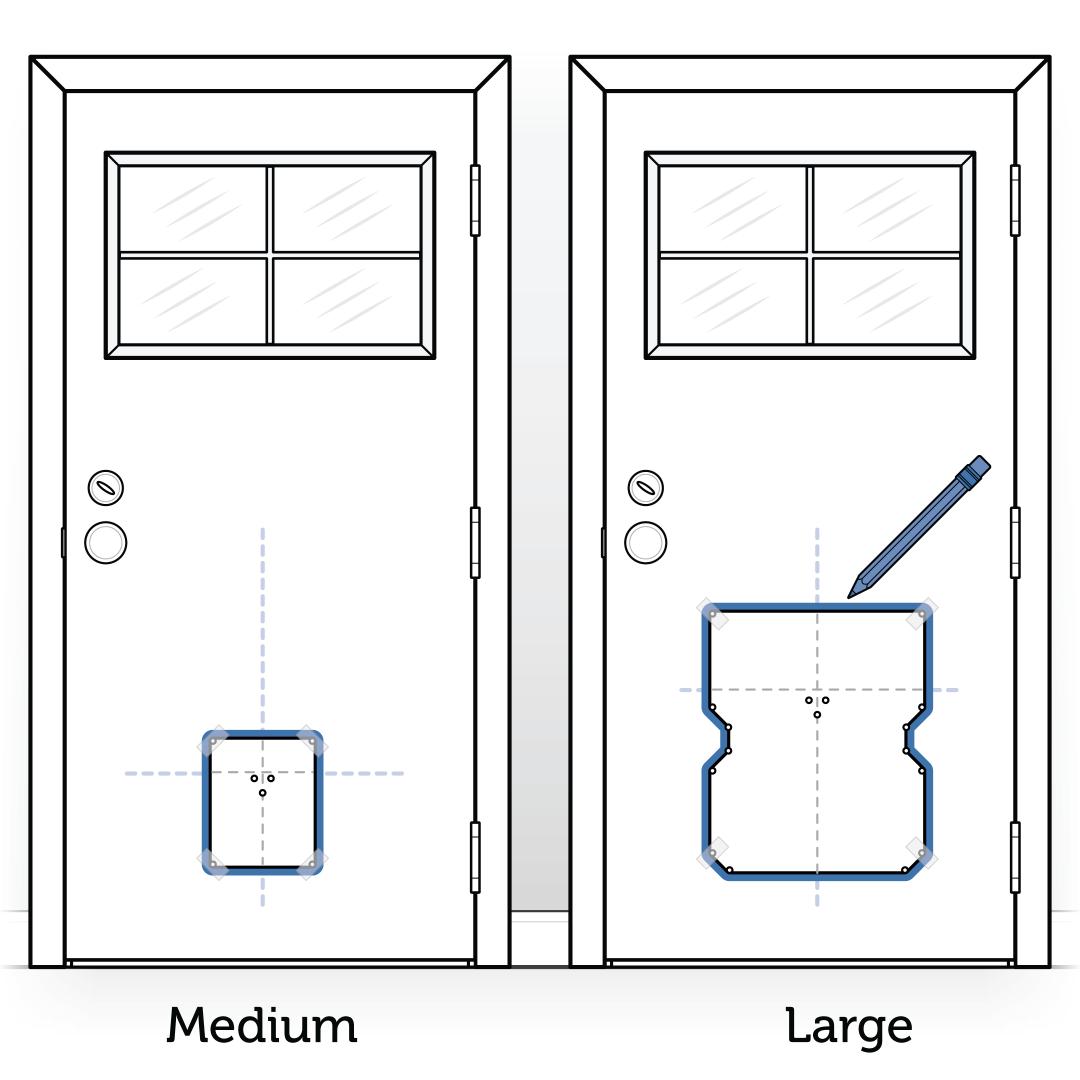
Carefully trace around the template, making sure to trace underneath the tape and connect the corners. Then remove the template and tape.
Cut the Pet Door Opening
Before drilling and cutting, ensure the area on the other side of the door where you have marked for removal is clear.
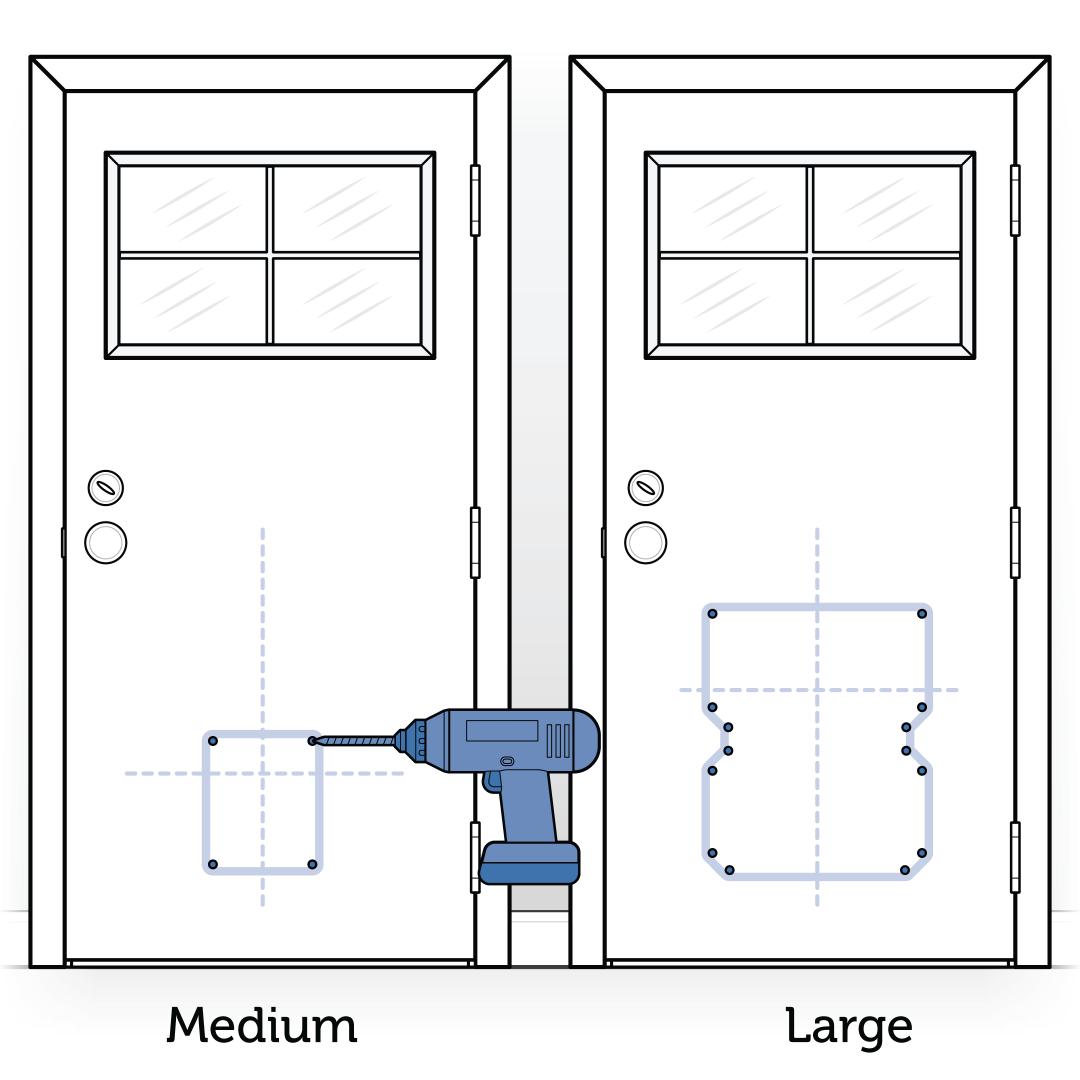
Drill ½-inch (12 mm) holes on the inside corners of the traced outline. Hold the drill steady at a 90-degree angle and use a framing square to keep it straight. These will be the pilot holes for the jigsaw blade.
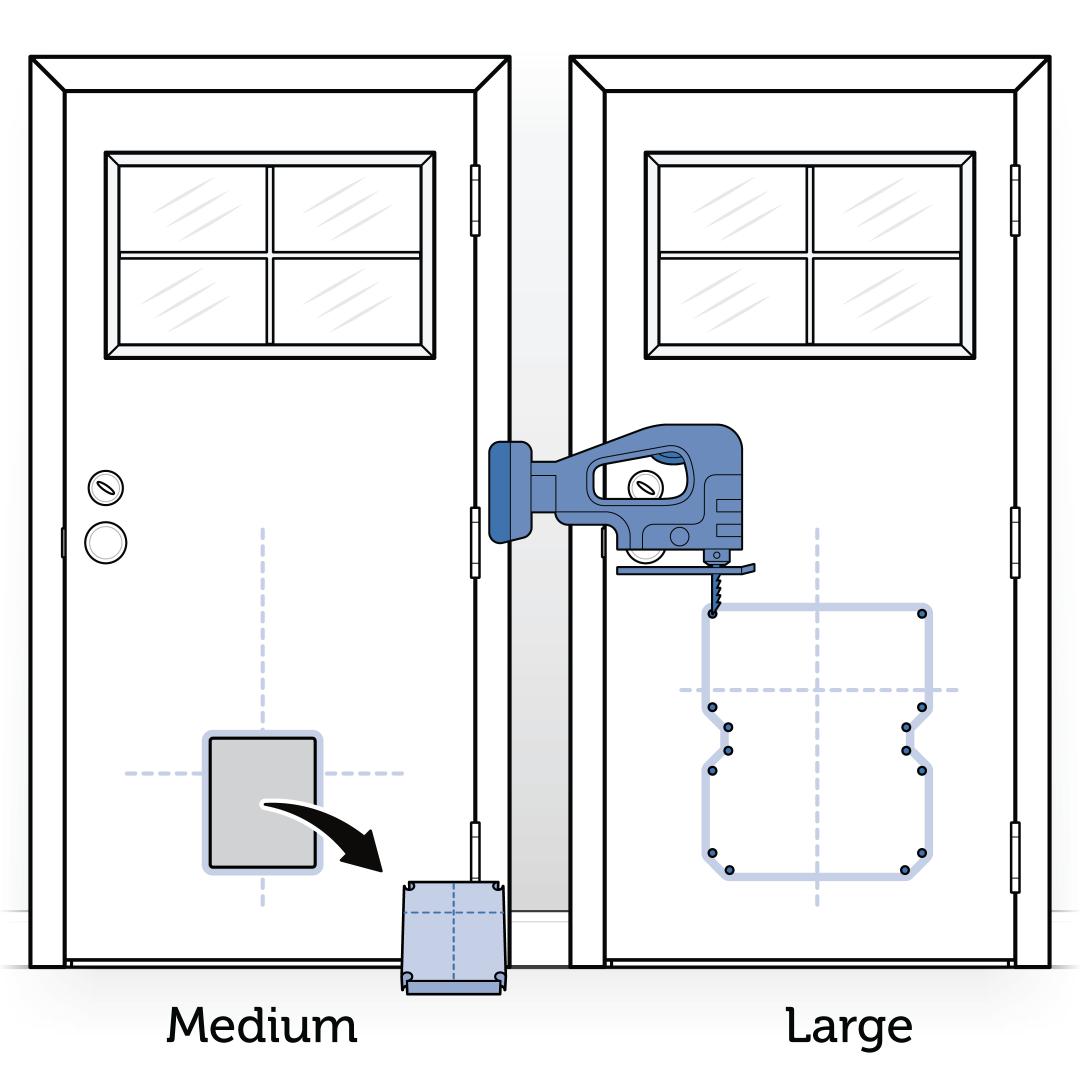
Place the jigsaw blade into a corner hole, making sure the blade goes entirely through the door, and cut along the marking. Continue until an opening is made. You may need to finely trim the corners to create a 90-degree angle for the door to fit.
Make sure your jigsaw blade is appropriate for the door material you are cutting (wood, PVC, etc.) and the thickness of the door.
If you removed the door, rehang the door on its hinges once the opening is cut.
Install the Frame

Insert the interior frame into the opening on the interior side of the door.
Make sure the interior frame is horizontally centered and level in the opening.
Have a helper hold the interior frame for you, or tape it in place while you go to the exterior side of the door to fit the exterior frame.
Place the exterior frame on the exterior side of the door, fitting it over the tunnel of the interior frame. Make sure the exterior frame is level.
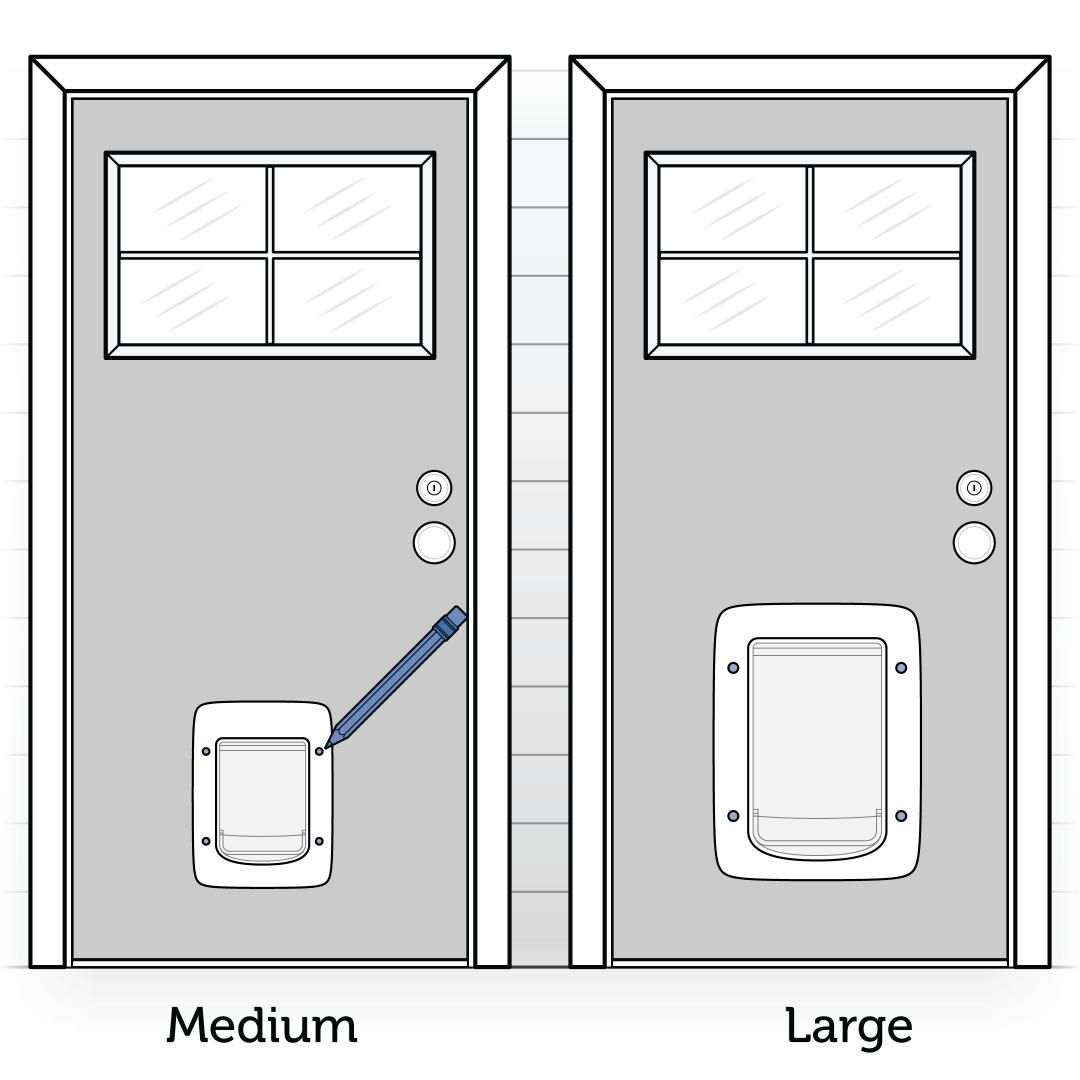
Hold the exterior frame in place and mark the holes for the screws with a pencil. Then remove the interior and exterior frames.
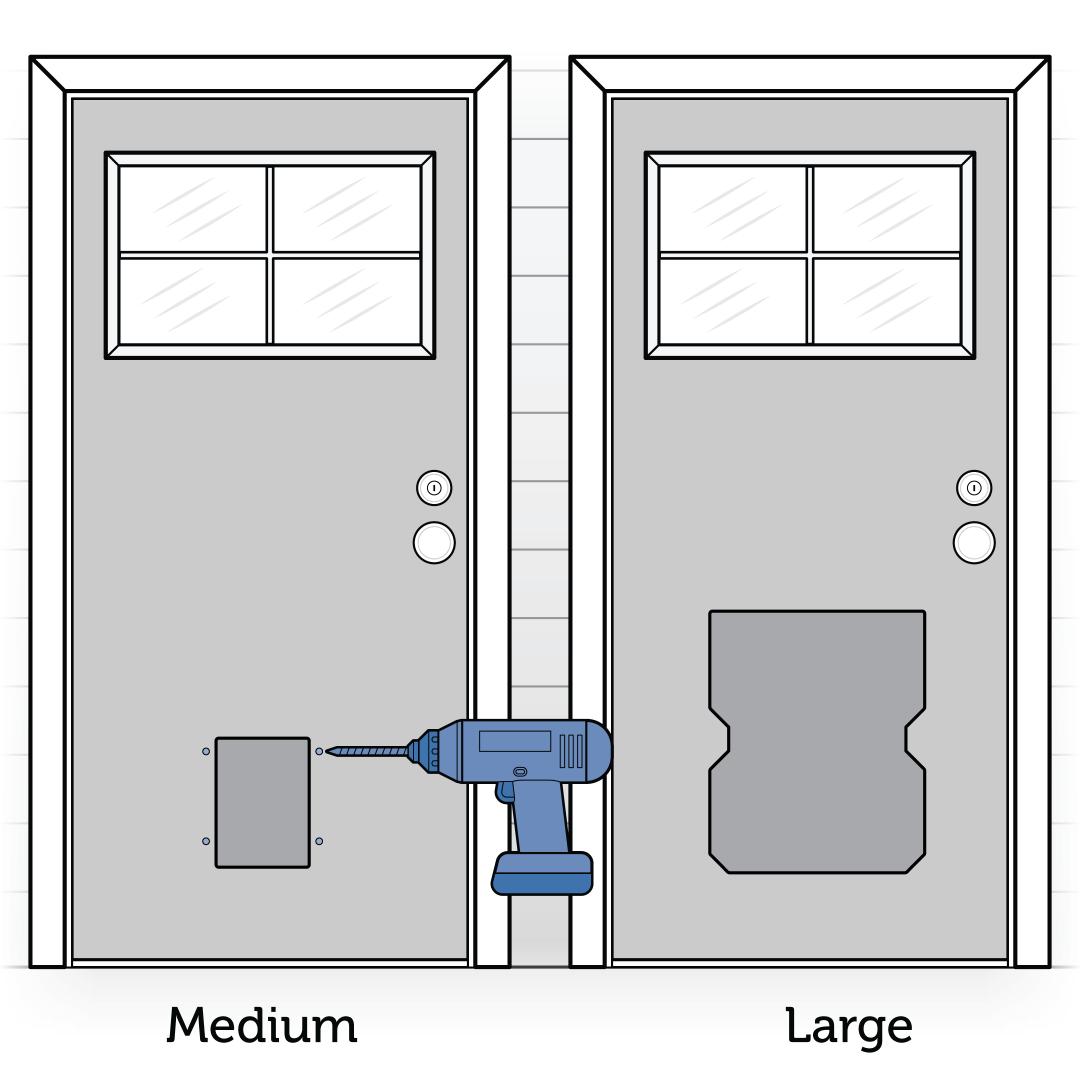
Drill ⁵⁄₁₆-inch (8 mm) holes through the door at the marked locations. Hold the drill steady, straight and level.
Measure the thickness of your door and determine which screws you will use for installation. If your door is:
- Less than 1 inch thick, use the 1 ⁹⁄₁₆-inch (40 mm) screws.
- Between 1 inch and 2 ¼ inches thick, use the 3 ⁵⁄₃₂-inch (80 mm) screws.
Place the interior and exterior frames back in the opening. Make sure both frames are level.
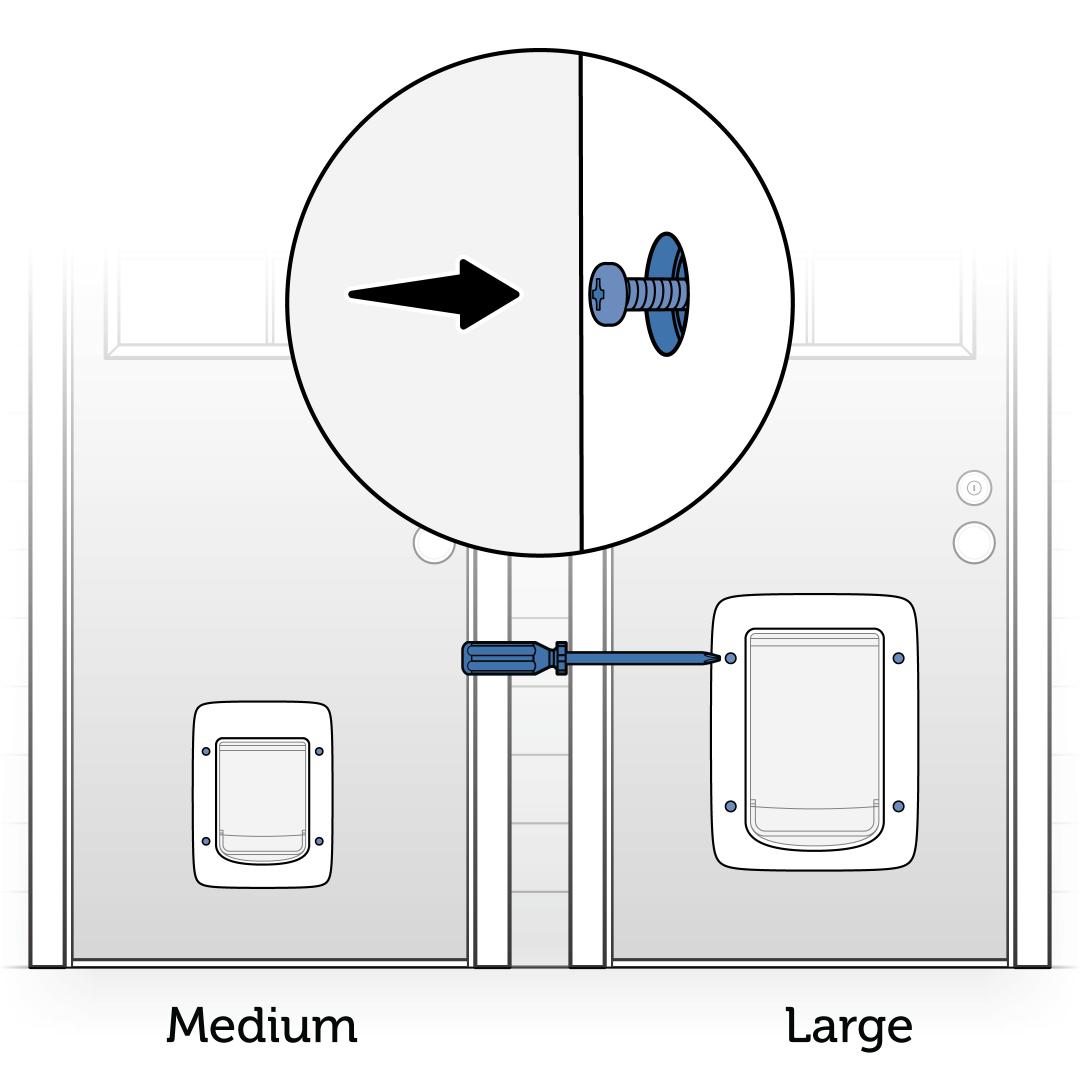
Holding both frames in place, insert the selected screws through the holes in the exterior frame, through the holes in the door, and into the holes on the back of the exterior frame.
Once you are satisfied that the pet door is positioned correctly, finish tightening the screws. Tighten the screws with a manual #2 Phillips (crosshead) screwdriver. Do not overtighten.
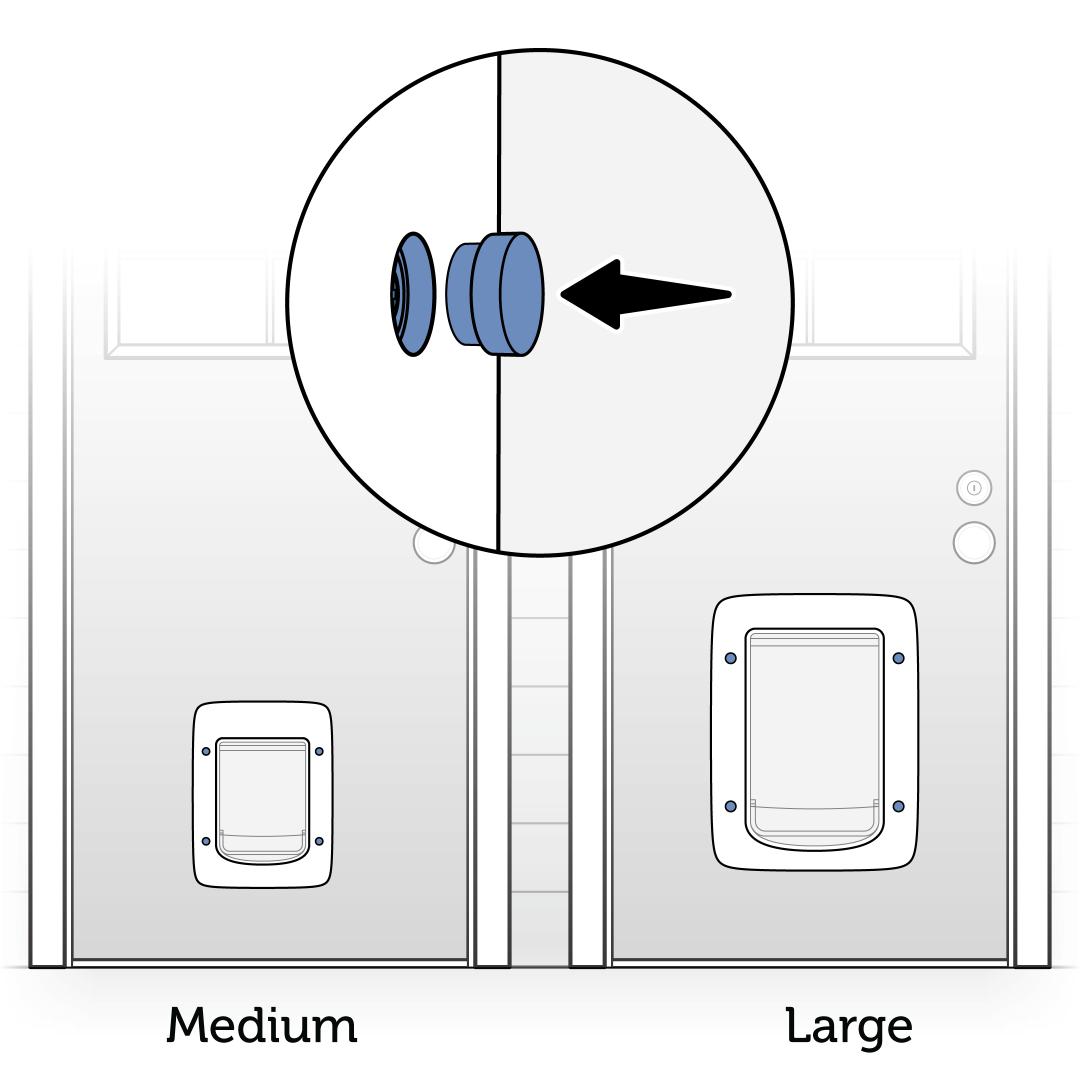
Insert blanking plugs into the holes in the exterior frame. Insert blanking plugs into the holes in the installation adaptor.
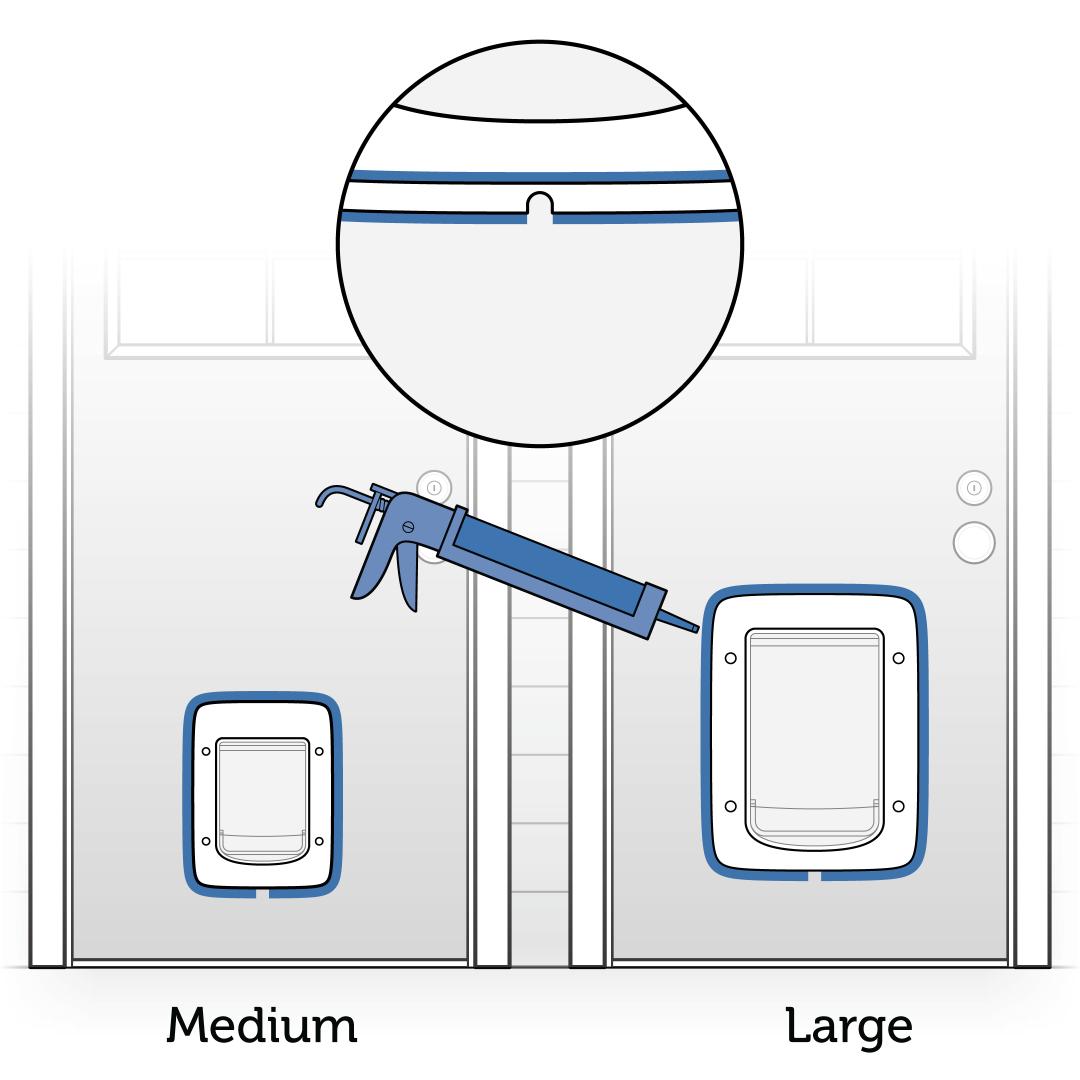
On the exterior side of the door, apply exterior-grade caulk around the edges of the installation adaptor and the exterior frame, making sure to leave the weep holes open.
If there are any gaps larger than ¼ inch (6 mm), you will need to fill them with foam backer rod or other appropriate material before applying caulk.
Apply exterior-grade caulk around the edge of the pet door tunnel where it meets the exterior frame.
Reinstall the batteries in the pet door. For more information, visit How To Replace the Batteries in My PetSafe® SmartDoor™ Connected Pet Door.
Now that your pet door is installed, it is time to train your pet to use it! Visit our article How To Train My Pet To Use My PetSafe® SmartDoor™ Connected Pet Door for more information.